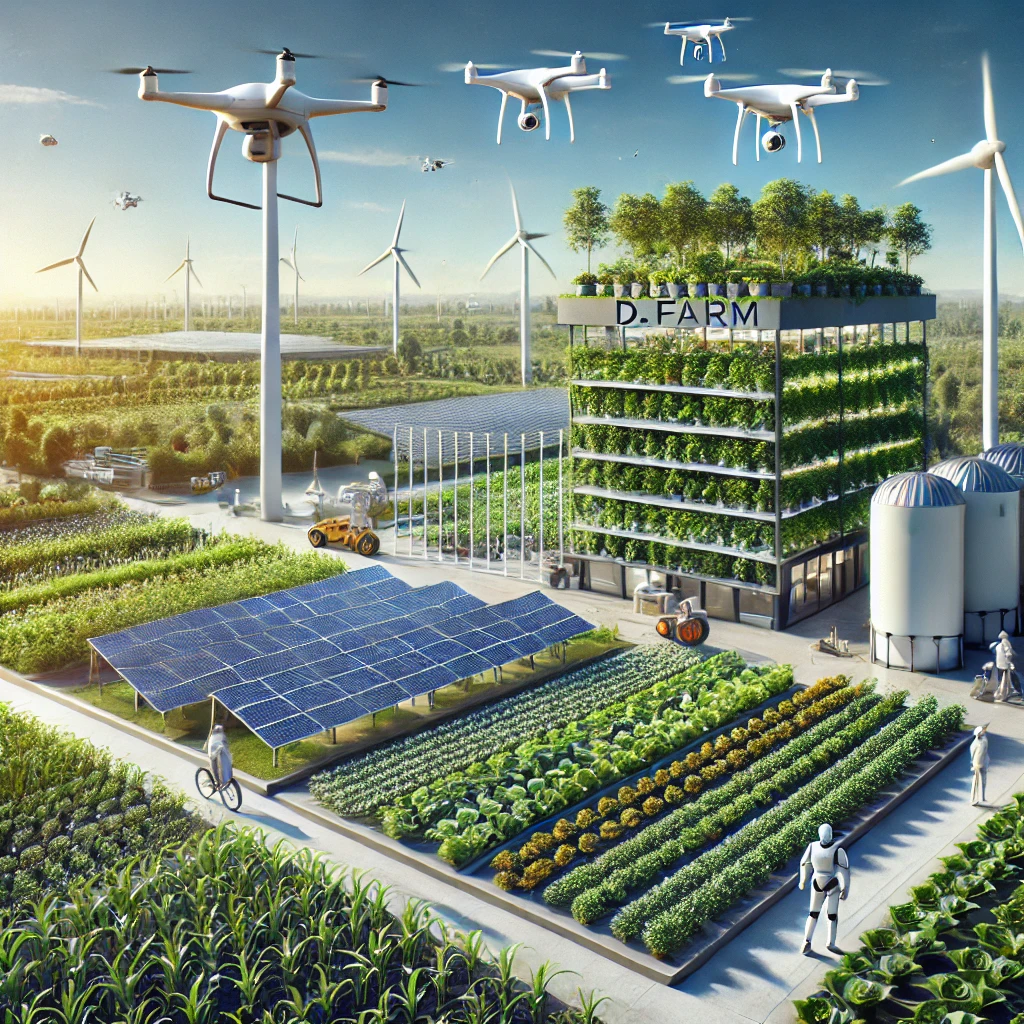The world of agriculture is experiencing a digital transformation, and d.Farm is at the forefront of this evolution. The platform bridges the gap between modern farming and cutting-edge technology, using data, automation, and precision techniques to make farming smarter, more sustainable, and far more efficient.
Farming, once considered a simple task of growing crops and raising livestock, has now entered an era where data is as important as soil, water, and seeds. In this blog, we explore how d.farm is pushing agriculture toward a digital future that maximizes productivity while reducing waste, conserving resources, and making farms more resilient in the face of global challenges like climate change and population growth.
What is d.farm?
At its core, d.farm is a digital farming platform that integrates a wide range of technologies to help farmers make informed decisions based on real-time data. By pulling data from a wide variety of sources—satellite images, soil sensors, drones, and weather forecasts—the platform provides a comprehensive overview of the farm’s conditions, enabling farmers to optimize their processes and resources.
The platform features tools to monitor crop health, track weather patterns, measure soil conditions, predict pest outbreaks, and much more. This smart approach helps farmers apply treatments like water, fertilizer, and pesticides with pinpoint accuracy, ensuring minimal waste and optimal results.
With d.farm, farmers don’t just rely on traditional farming practices; they benefit from data-driven insights, significantly improving their ability to meet modern challenges and increase profitability.
Key Features of d.farm
One of the key aspects of d.farm is its integration of multiple technologies to create a seamless farming experience. Let’s look at the major features that make this platform revolutionary:
- Real-Time Data and Monitoring: The integration of Internet of Things (IoT) sensors and satellite imagery allows d.farm to provide real-time data from the fields. This includes information on soil health, crop growth, moisture levels, and other critical parameters, helping farmers make better-informed decisions at any stage of the growing cycle.
- Precision Agriculture: Traditional farming often involves blanket applications of fertilizers, pesticides, and water to entire fields, which can lead to inefficiencies and environmental harm. Precision farming through d.farm allows for targeted applications, ensuring that resources are used only where they are needed, reducing waste and increasing yields.
- Predictive Analytics: By processing large volumes of historical and real-time data, d.farm offers powerful predictive analytics that can forecast trends in weather patterns, pest outbreaks, and potential crop diseases. This predictive ability helps farmers act proactively rather than reactively, leading to reduced risks and enhanced productivity.
- Automated Farm Management: Through automation, d.farm helps streamline the day-to-day operations of running a farm. The platform can automate irrigation, fertilization, pest management, and even harvest scheduling based on data inputs, freeing up time for farmers to focus on other essential tasks.
- Resource Efficiency: With its focus on efficiency, d.farm helps reduce overuse of water, chemicals, and energy. The platform’s detailed insights allow farmers to optimize their usage of resources, reducing environmental damage, saving money, and ensuring more sustainable farming practices.
d.farm: Revolutionizing Sustainability in Agriculture
In recent years, sustainability has become a core concern in agriculture, driven by the need to feed a growing global population without causing further harm to the environment. Sustainable farming practices are essential to the future of our food systems, and d.farm plays a key role in helping farmers reduce their environmental footprint.
Here’s how d.farm addresses sustainability challenges in agriculture:
- Water Conservation: Agriculture accounts for around 70% of global freshwater use. With d.farm, farmers can monitor and optimize irrigation through real-time soil moisture data, ensuring that water is used efficiently, only when and where it’s needed.
- Minimizing Chemical Inputs: Over-reliance on fertilizers and pesticides harms both the environment and farm profitability. With data collected from a combination of sensors and aerial imagery, d.farm enables farmers to apply fertilizers and pesticides precisely, helping reduce their environmental impact while still ensuring healthy crops.
- Soil Health: Healthy soils are essential for sustainable farming. d.farm empowers farmers to continuously monitor soil conditions, ensuring soil degradation is avoided. By understanding the specific needs of their soil, farmers can apply nutrients in a balanced way, promoting long-term soil health and improving farm resilience.
- Reducing Food Waste: Through predictive analysis and precise planning, d.farm helps farmers predict crop yields with high accuracy, reducing the risk of both underproduction and overproduction, which can lead to food waste. By aligning their operations with real-time conditions, farmers can better plan harvest times and transportation logistics, minimizing spoilage.
How d.farm Helps Farmers Overcome Modern-Day Challenges
The digital farming solutions provided by d.farm help farmers face the most significant challenges of modern agriculture: unpredictable weather, pests and diseases, labor shortages, and economic pressure.
1. Mitigating Climate Risk: Climate change brings greater uncertainty to farming conditions, leading to unpredictable weather patterns that can damage crops. d.farm offers predictive insights based on historical climate data, giving farmers advanced notice about expected weather conditions. With this information, they can take proactive measures to protect their crops, such as adjusting irrigation schedules or preemptively harvesting crops in anticipation of severe weather.
2. Precision Pest and Disease Management: Pests and diseases can devastate crops if not addressed quickly. With d.farm’s satellite and drone imagery, farmers can spot the first signs of infestation or disease before they spread. This early detection allows them to take targeted action, ensuring crops are protected with minimal pesticide use.
3. Labor Efficiency: The agriculture industry is facing a growing labor shortage, especially in regions reliant on seasonal workers. d.farm’s automation tools help mitigate this challenge by automating time-consuming tasks like irrigation and fertilization, reducing the need for human labor and increasing operational efficiency.
4. Economic Pressures: Rising costs for inputs such as water, energy, and labor are straining the profits of many farmers. d.farm helps reduce the cost of inputs by offering more efficient resource management, improving farm profitability even during tough economic times.
Looking Ahead: What’s Next for d.farm?
As agricultural technology continues to evolve, d.farm is primed for ongoing innovation. Future developments could include further integration of artificial intelligence and machine learning for even more accurate predictive modeling. Blockchain technology may also be adopted to enhance supply chain transparency and food traceability, providing consumers and farmers with a clear record of production practices.
The potential for automation on farms is also immense, with drones and robots likely becoming even more integral in monitoring crops and performing maintenance. As the platform evolves, d.farm will continue to push the boundaries of what’s possible in the agricultural space.
Conclusion: A Digital Future for Sustainable Farming
d.Farm represents a seismic shift in the world of agriculture, bringing farmers the power of smart, data-driven farming to create more sustainable and efficient farming practices. By enabling precision agriculture, reducing the use of chemicals and water, and automating farm operations, d.farm not only makes farming more cost-effective but also helps the agricultural sector address the pressing challenges of climate change and sustainability.
The future of farming is undoubtedly digital. With d.farm leading the way, farmers can embrace the opportunities of tomorrow’s technologies today, cultivating a smarter, greener, and more resilient agricultural future for generations to come.




